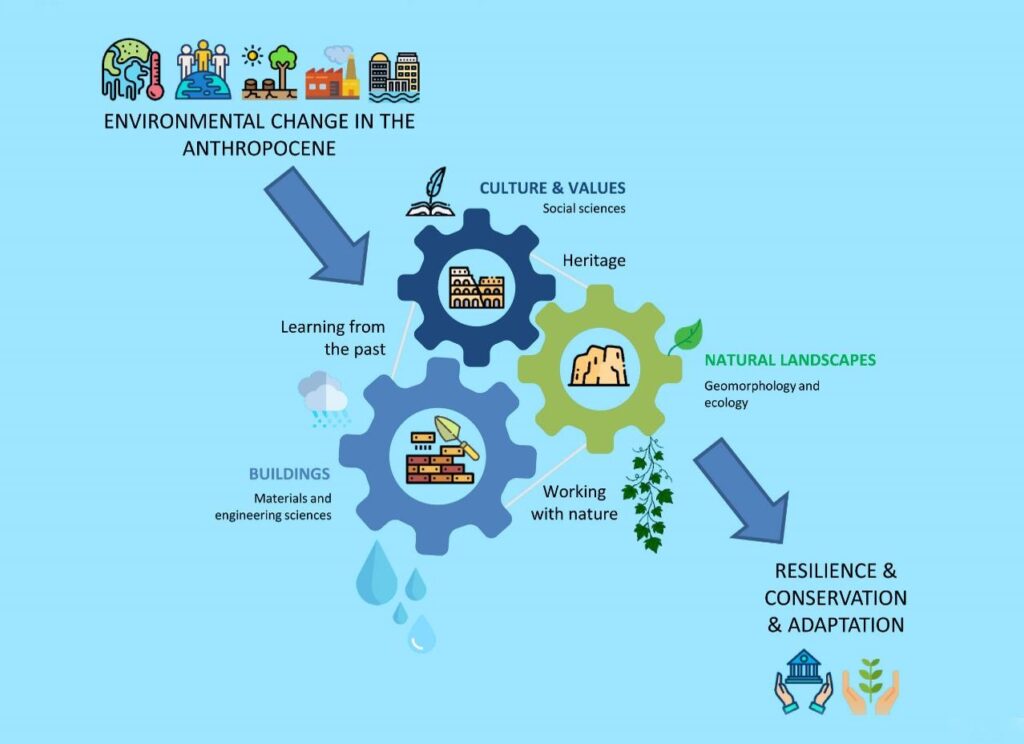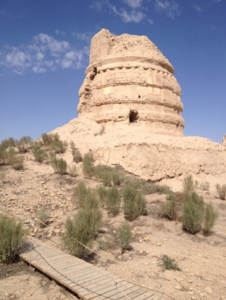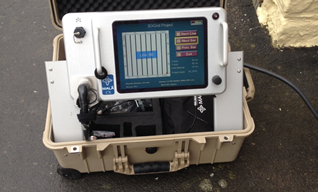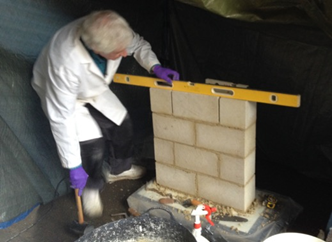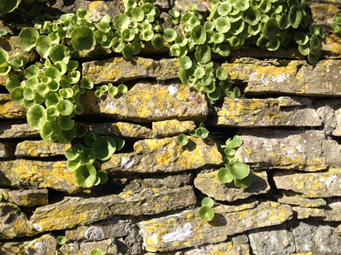OxRBL provides a focus for research at the intersection of geomorphology and heritage conservation. The acronym originally stood for the Oxford Rock Breakdown Laboratory, as investigations of the weathering and deterioration of rock and natural stone provided the core of our research. However, as the team has grown and diversified, OxRBL now stands for the Oxford Resilient Buildings and Landscapes Lab, reflecting our new, broader set of interests and expertise. OxRBL has a collaborative partnership with the Getty Conservation Institute in the form of the Built Heritage Research Initiative. We also have a collaborative partnership with the Dunhuang Research Academy in NW China.
This short video provides an introduction to some of our interests and activities:
At present, OxRBL carries out research and outreach activities across four main thematic areas:
1. Linking culture, climate change and heritage conservation
How people and environmental conditions interact with natural and built heritage sites is at the heart of providing more resilient and better-conserved heritage assets in the future. Several of our projects deal with such issues, and we are particularly interested in interdisciplinary projects cutting across many research traditions.
Our projects in this thematic area include:
- Jenny Richards’ work on ‘Learning from nature: evaluating site-based conservation approaches to mitigating climatic risks to earthen heritage sites in NW China’.
- Sam Woor’s project on ‘Cultural Landscapes of the Past: Reconstructing Prehistoric Environmental Change in South-East Arabia’.
- The project led by Katrin Wilhelm on Heritage Heads and Oxford’s Stone-Built Heritage as a Proxy for Historic Air Quality.
- The Project led by Heather Viles on ‘Inheritance and Innovation: Science-based heritage conservation for sustainable economic development on the eastern Silk Road’ (funded by an EPSRC GCRF Institutional Sponsorship Award).
Our recent outputs from this work include:
Wilhelm, K., et al. 2024. Microplastic pollution on historic facades: hidden ‘sink’or urban threat? Environmental Pollution, 343. DOI: 10.1016/j.envpol.2023.123128
Brimblecombe, P.; Richards, J. Applied climatology for heritage. Theoretical and Applied Climatology, 155. DOI: 10.1007/s00704-024-05059-6
Wilhelm, K., et al. 2023. The Historic Built Environment As a Long-Term Geochemical Archive: Telling the Time on the Urban Pollution Clock. Environmental Science & Technology. doi: 10.1021/acs.est.3c00153
Richards, J., et al. 2023. Evaluating the robustness of nature-based solutions: future resilience of sedum-based soft capping as a conservation approach for heritage sites in Britain and Ireland. Physical Geography. doi: 10.1080/02723646.2023.2212422
Richards J & Brimblecombe P. 2022. The transfer of heritage modelling from research to practice. Heritage Science, 10(17).
Gemeda, D. O.; Korecha, D.; Garedew, W. Evidences of climate change presences in the wettest parts of southwest Ethiopia. 2021. Heliyon, 7 (9), e08009. DOI: 10.1016/j.heliyon.2021.e08009
Wilhelm, K., Longman, J., Orr, S.A., Viles, H 2021. Stone-built heritage as a proxy archive for long-term historical air quality: A study of weathering crusts on three generations of stone sculptures on Broad Street. Oxford Sci Total Environ, 759, p.143916.
Richards, J., Wang, Y., Orr, S. and Viles, H. 2018. Finding Common Ground between United Kingdom Based and Chinese Approaches to Earthen Heritage Conservation. Sustainability, 10(9), p.3086.
2. Developing scientific methods for diagnosing and monitoring change in natural and built heritage
OxRBL researchers are involved in a range of projects to improve the use of field-portable, non-destructive scientific evaluation methods, especially those that are cheap, easily available and simple to use by practitioners and researchers around the world. Developing ‘best practice’ protocols is a particularly important task in this area. Furthermore, OxRBL researchers are also working collaboratively to explore the use of cutting-edge scientific techniques to tackle key challenges in geomorphology and heritage science.
Projects addressing this research theme include:
-
-
- The Heritage stone Monitoring and Remediation: knowledge exchange placements (KNOWMORE) network led by Scott Orr. This network is coordinated by the Belgian Royal Institute for Cultural Heritage (KIK-IRPA) and connects researchers, practitioners, and policy makers working on stone-built heritage in the UK and Belgium.
- Daire Brown’s project ‘Breathing stones – Developing laser spectroscopic methods to study moisture uptake and release by historic limestone in polluted urban environments.’
- Ian Maybury’s project ‘From books to bricks: Hyperspectral imaging for heritage’.
- The ‘Damp Monitor’ project for Historic England, led by Heather Viles, which is comparing the utility of a range of handheld moisture measurement devices for heritage building materials, and will be producing a Technical Advice Note.
- The ‘Sandstone Conservation Project’, led by Heather Viles in partnership with the Getty Conservation Institute. A particular focus of this project is the development of a toolkit of scientific methods that will provide reliable assessments in the laboratory and field of the impact of consolidants and other treatments on sandstones.
-
Our recent outputs on this theme include:
Wilhelm, K.; Gulotta, D.; Krus, M.; Kilian, R.; Viles, H.2022. Complexities in comparing UPV data over a >30-year exposure trial of consolidated sandstone. In International Symposium Consolidation 2021 – Stone Consolidation in Cultural Heritage, Lisbon.
Godts, S., Orr, S.A., Desarnaud, J., Steiger, M., Wilhelm, K., De Clercq, H., Cnudde, V., De Kock, T. 2021. NaCl-related weathering of stone: the importance of kinetics and salt mixtures in environmental risk assessment. Heritage Science, 9(1).
Desarnaud, J., Kiriyama, K., Bicer Simsir, B, Wilhelm, K. and Viles, H. 2019. A laboratory study of Equotip surface hardness measurements on a range of sandstones: What influences the values and what do they mean?. Earth Surface Processes and Landforms.
3. Developing innovative conservation techniques for complex heritage sites and challenging materials
There is an increasing need for innovative approaches to conserving natural and cultural heritage, and OxRBL researchers are involved in a wide range of projects in this area developing both preventive and interventive conservation methods. Our research in this thematic area often focuses on learning from the past.
Projects addressing this research theme include:
-
-
- Martin Michette’s project on the deterioration and conservation of Reigate Stone at the Tower of London.
- Yinghong Wang’s project, in collaboration with the Dunhuang Academy, on the deterioration and conservation of the sandstone North Cave Temple Complex in NW China.
- Blen Gemeda’s project on the deterioration and conservation of the rock-hewn churches at Lalibela, Ethiopia.
- Kathryn Royce Schronk’s project on the deterioration and conservation of mineral collections in museums.
- The EPSRC Impact Acceleration Award project, led by Lucie Fusade, to develop a decision-making tool to encourage the use of lime mortars in heritage conservation.
-
Recent outputs on this theme include:
Michette, M.; Viles, H.; Vlachou, C.; Angus, I. 2022. Do environmental conditions determine whether salt driven decay leads to powdering or flaking in historic Reigate Stone masonry at the Tower of London? Engineering Geology, 303. DOI: 10.1016/j.enggeo.2022.106641.
Royce, K., Baars, C.B., and Viles, H. 2021. Defining Damage and Susceptibility, with Implications for Mineral Specimens and Objects: Introducing the Mineral Susceptibility Database Studies in Conservation, DOI: 10.1080/00393630.2021.2015947
Gemeda, B.T., Lahoz, R., Caldeira, A.T. and Schiavon, N., 2018. Efficacy of laser cleaning in the removal of biological patina on the volcanic scoria of the rock-hewn churches of Lalibela, Ethiopia. Environmental Earth Sciences, 77(2), p.36.
4. Linking the conservation of biodiversity with heritage conservation
There are many advantages to be gained from integrating the conservation of biodiversity with the conservation of geoheritage and cultural heritage. OxRBL has a long track record of working on such topics, which we explore under the banner of ‘Learning from Nature’.
Projects addressing this research theme include:
-
-
- Martin Coombes’ project on ‘Assessing the bioprotective services of mussels on Southwestern Atlantic rocky coastlines’, in collaboration with Jorge Gutiérrez (Universidad Nacional de Mar del Plata, Argentina), funded by National Geographic.
- Tim Baxter’s project on ‘Biodiversity and bioprotection of historic maritime structures: a possible win-win?’
- Katrin Wilhelm & Martin Michette’s Global network for Sites at the Intersection of Natural and Cultural Heritage (SXNCH)
-
Recent outputs from research in this thematic area include:
Harvey, G., et al. 2025. Global diversity and energy of animals shaping the Earth’s surface. Proceedings of the National Academy of Sciences, 122(8). DOI: 10.1073/pnas.2415104122.
Coombes, M.A., Viles, H.A. 2021. Integrating nature-based solutions and the conservation of urban built heritage: Challenges, opportunities, and prospects. Urban Forestry & Urban Greening, 63, p.127192.
Coombes, M.A., Viles, H.A. and Zhang, H. 2018. Thermal blanketing by ivy (Hedera helix L.) can protect building stone from damaging frosts. Scientific Reports, 8(9834).
Wood, C., Cathersides, A and Viles, H. 2018. Soft capping on ruined masonry walls. Historic England Research report 88. https://research.historicengland.org.uk/Report.aspx?i=16216&ru=%2fResults.aspx%3fp%3d1%26n%3d10%26rn%3d88%26ry%3d2018%26ns%3d1
An integrated systems approach allows for sustainable and resilient societies and nature:
